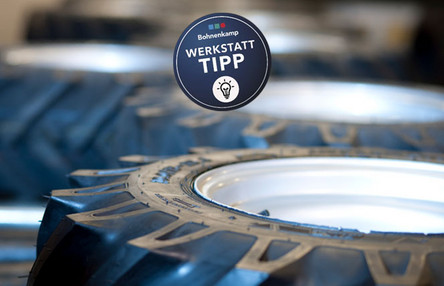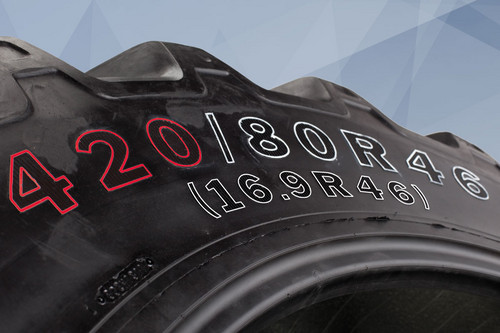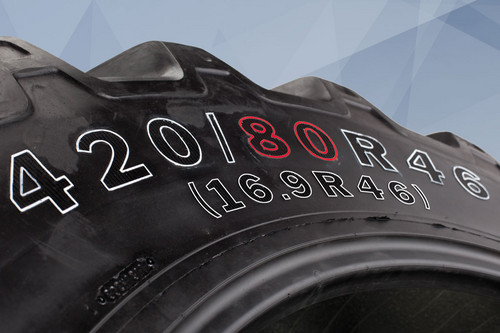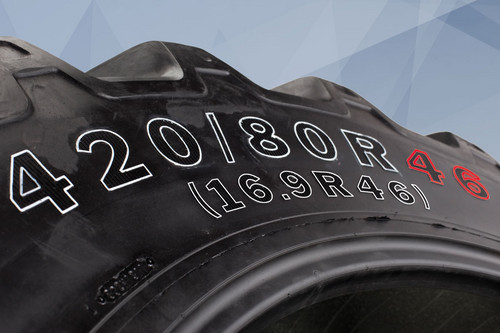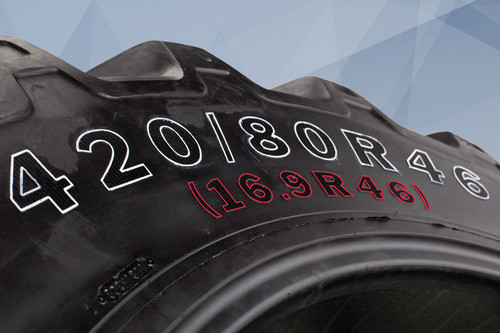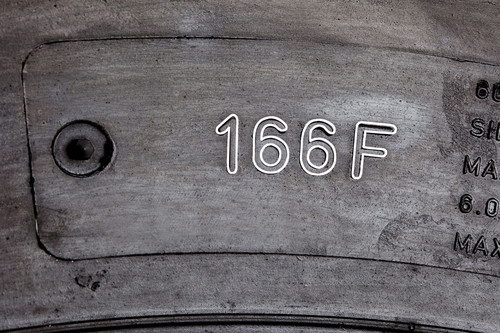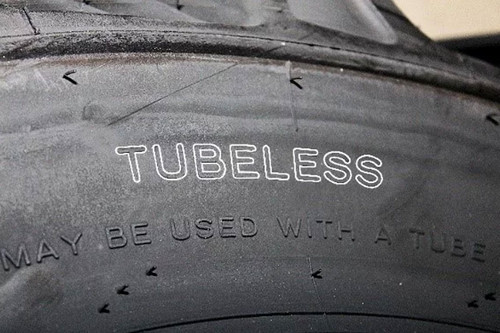Tyre dimensions
The long-standing international definition of tyresizes in inches has been changed in recent years. The modern version provides information on tyre width, tyre height and design as well as the rim diameter that matches the profile. Some tyres still meet both size standards today, as our example shows.
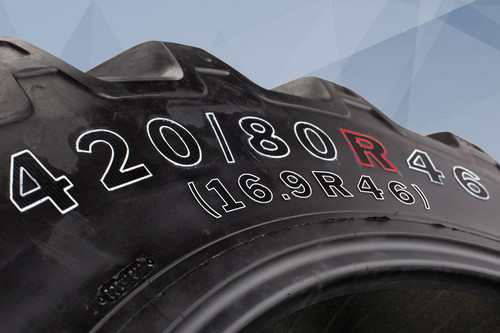
Type:
To differentiate between the two types of diagonal and radial tyres, diagonal tyres have a hyphen (420 / 80 - 46) and radial tyres have an R, as in our example.
Load capacity and maximum speed
The load and speed index can also be found on the tyre sidewall. It indicates the load capacity at a given reference air pressure and the maximum permissible speed in coded form.
The 166F marking certifies that the tyre has a load capacity of 5,300 kg at 80 km/h, with the number 166 indicating the maximum load capacity and the letter abbreviation F indicating the speed index. Load and speed are determined using various test procedures designed to ensure that the tyre can safely carry a certain load under given conditions and remains stable and safe at a defined speed.
The specified load capacity applies to an assumed standard inflation pressure during the tyre test. In practice, the actual load capacity depends to a certain extent on the tyre pressure. More details can be found in the air pressure table. It is available for every tyre from the manufacturer and the dealer.
With tube or without?
The important information on the tyre sidewall also includes whether a tyre can be driven with or without an inner tube depending on its design. The abbreviation TL stands for tubeless and means that no inner tube is required. The abbreviation TT (Tube Type) indicates that this tyre must be driven with a tube.
DOT number reveals the tyre age
In addition to the above information, the date of manufacture can also be found on the tyre. It is part of the DOT number; DOT stands for North American Department of Transportation. Tyre manufacturers can place the production month and year in the form MMYY at either the beginning or the end of the code. A tyre with the number 2311 was therefore produced in calendar week 23 of 2011. Note: New tyres are those that have been stored protected from wind and weather for no longer than five years.

